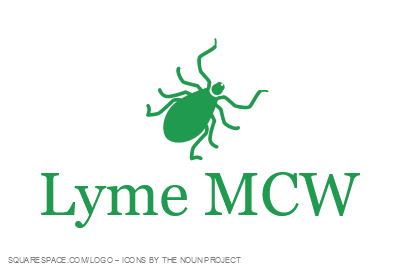DEVELOPMENT OF A NOVEL LYME VACCINE WITH LOCHHEAD SCIENTIFIC
A collaborative effort between Lyme MCW and Lochhead Scientific
Lochhead Scientific has recently synthesized a two-component conjugate vaccine candidate that combines OspA with a highly immunogenic T cell antigen that was identified through research conducted at the Medical College of Wisconsin (MCW). This immunodominant T cell antigen is derived from the broadly conserved methyl-accepting transducer domain (MATD) from the Bb chemotaxis protein Mcp4. Lochhead Scientific’s vaccine candidate consists of the Mcp4 MATD as the T-cell immunogen linked to OspA as the B-cell immunogen (patent application no. 63/574,550).
SIGNIFICANCE
There is an urgent and unmet need for a safe and effective Lyme disease (LD) vaccine. The LD pandemic is expanding unabated, with an estimated global seroprevalence of Borrelia burgdorferi (Bb) infection of 14.5%. In the U.S., there are nearly 500,000 cases of LD annually. LD-related health care costs in the U.S. are as high as $1.3 billion each year. Current vaccine candidates in development block transmission of Bb by targeting the outer surface protein A (OspA) as the B cell immunogen. Although safe and modestly effective, OspA-based vaccines only provide short-term protection and require frequent boosts. Lochhead Scientific’s novel two-component conjugate vaccine candidate incorporates both T cell and B cell immunogens to boost long-term efficacy by generating high-affinity, long-lasting antibody responses to OspA.
Previous & Current Lyme Vaccine Candidates
LYMErix™, developed by GSK and FDA-approved in 1998, was safe and moderately effective. However, a two-dose series provided only ~50% protection, and a three-dose series provided ~75% protection in humans and mice. This vaccine was removed from the market shortly after FDA approval in 2002 due to lack of demand, the need for frequent boosters, weak recommendations by the CDC, and pending lawsuits by Lyme disease activists who believed that the OspA vaccine caused significant adverse reactions, these claims of which were later proven false
Current Vaccine Candidate Competitors have developed a hexavalent OspA-based vaccine candidate that incorporates North American and European Lyme OspA serotypes, requires a 3-shot regimen and annual boosters to maintain efficacy. OspA is rapidly downregulated during tick-to-human transmission, and OspA and other surface lipoproteins used as vaccine targets are expressed on highly genetically variable plasmids. Furthermore, OspA is a weak T cell antigen and only a subset of infected patients develop T cell responses to OspA. Together, these data indicate that vaccines targeting OspA alone may be sub-optimal.
LOCHHEAD SCIENTIFIC’S APPROACH
Methyl-Accepting Chemotaxis Proteins (Mcps) are highly important in Borrelia chemotaxis and motility. Located at the poles of Borrelia in trimers of dimers, Mcps bind chemoeffectors, such as sugars or tick salivary proteins, and drive chemotaxis through signaling proteins which themselves drive chemotaxis by signaling to the flagellar motor. They show high conservation between North American and European Lyme disease spirochetes, are essential for immune invasion, and are chromosomally encoded. Research recently completed by Lochhead Scientific’s collaborator, MCW, used immunopeptidomics approaches to identify immunodominant T cell antigens derived from Bb proteins. A single epitope derived from a methyl-accepting chemotaxis protein Mcp4 was identified as an immunodominant CD4+ T cell antigen in mice, and mice infected with Bb generated a T cell response to this epitope. A separate but related MCW study found that an epitope derived from a homolog, Mcp1, was presented by human antigen presenting cells in vitro. These two peptides, Mcp4 in mice and Mcp1 in humans were derived from the same region of their respective proteins: within the methyl-accepting transducer domain. This suggests that this protein, and this domain in particular, is accessible to MHC class II processing and presentation. Lochhead Scientific is exploiting this immunogenic Bb T cell epitope in a conjugate Lyme Disease vaccine.
Comparative effects of conjugate vaccine candidate developed by Lochhead Scientific on duration and efficacy of protection against infection, compared with current and former Osp-A-based vaccine candidates.
(A) OspA-MATD conjugate vaccine candidate developed by Lochhead Scientific (structure shown in red box) provides additional T cell “help” from the strong T cell immunogen Mcp4 MATD component to generate strong T cell-dependent germinal center (GC) responses to OspA. This results in robust affinity maturation and isotype switching, leading to production of long-lived plasma cells that generate high-affinity antibodies. (B) In contrast, former LD vaccine LYMErix™ and current vaccine candidates, both OspA-only vaccines, lack a strong T cell immunogen and fail to generate a robust T cell-dependent GC responses. As a result, immunization with LYMErix™ or competitor vaccine candidates achieves only modest, short-term protection that rapidly wanes 6-12 months post-immunization.
Lochhead, R. B. (2024). Compositions and Methods for Treating and/or Preventing Lyme Disease (U.S. Patent Application No. 63/574,550). Utility- Provisional Application under 35 USC 111(b)


